Montroy DeMarco Architecture receives LEED Platinum for SOCOTEC headquarters
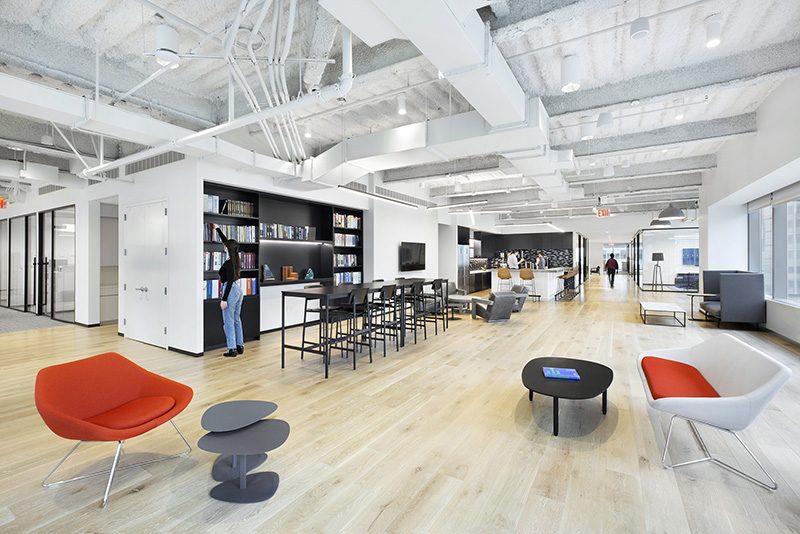
Manhattan, NY A newly completed, 11,000 s/f U.S. headquarters office of SOCOTEC, Inc. (formerly Vidaris, Inc.) designed by Montroy DeMarco Architecture (MDA), received LEED Platinum certification from the US Green Building Council. LEED Platinum is the highest level of certification, indicating an ultimate degree of sustainability through energy efficient design and building systems, recycled and environmentally responsible materials, and sustainable operations and practices. At the time of its certification, SOCOTEC’s headquarters was one of only six LEED CI v4 Platinum certified projects in New York State.
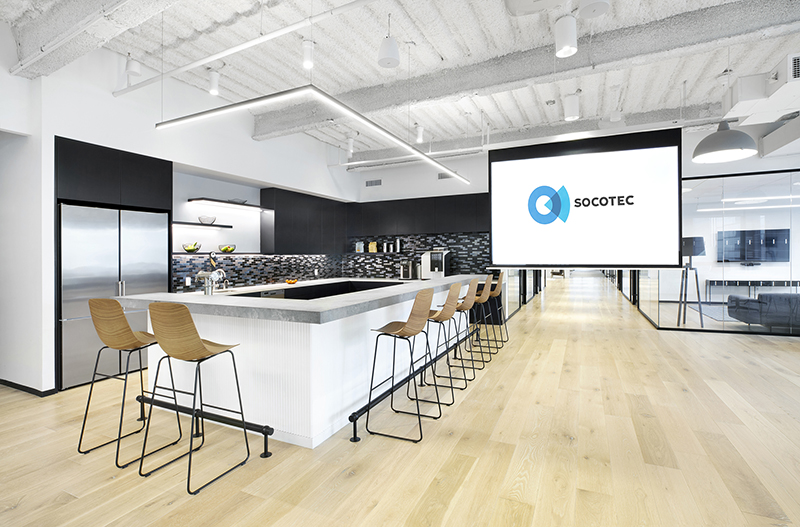 SOCOTEC is a leading provider of sustainability and high-performance consulting and design services in the construction, real estate, and infrastructure sectors. The new office, originally designed for Vidaris prior to its acquisition by SOCOTEC, is located on the 24th floor of the One Five One tower, at 151 West 42nd St., at the convergence of Bdwy. and Times Square. MDA’s designers, in a close collaboration with SOCOTEC’s internal sustainability consulting team, developed the design, implemented construction procedures, and selected materials and systems that meet the requirements of the LEED Platinum certification.
SOCOTEC is a leading provider of sustainability and high-performance consulting and design services in the construction, real estate, and infrastructure sectors. The new office, originally designed for Vidaris prior to its acquisition by SOCOTEC, is located on the 24th floor of the One Five One tower, at 151 West 42nd St., at the convergence of Bdwy. and Times Square. MDA’s designers, in a close collaboration with SOCOTEC’s internal sustainability consulting team, developed the design, implemented construction procedures, and selected materials and systems that meet the requirements of the LEED Platinum certification.
According to MDA project manager Sarah Bigos, “The office occupies the south half of the building floor and is wrapped on the east, south and west sides with large windows that flood the space with natural light and enhance employee well-being. The layout is planned around several functional areas. The reception area faces a 16-seat 490 s/f boardroom that is flanked by two executive offices, two smaller meeting rooms, each of 230 s/f, and several additional offices. Each of these rooms has glass partition walls facing the central corridor so that light and views can be appreciated by the other staff.”
SOCOTEC principal John Amatruda, RA, LEED fellow, BREEAM international assessor, said, “When our previous lease at 360 Park Ave. in Manhattan expired, we looked upon it as an opportunity to rethink our office environment and associated work practices.” At that time, the firm also maintained several smaller satellite offices throughout New York City, all of which had been impacted by workplace changes during the COVID-19 pandemic.
The landlord, The Durst Organization, also served as construction manager. The contractor was Cross Management Corporation and ME Engineers served as the MEP designer.
“Our firm’s leadership determined that a hybrid work environment – where the majority of the staff would divide their time between field work, home, and office – would be most suitable for the firm’s operations, and called upon Montroy DeMarco Architecture to design it. The new office has enabled us to both consolidate space as well as to create a highly collaborative, energetic and sustainable workplace that is well suited for a hybrid working model,” added Amatruda.
“Through the use of a flexible seating concept and numerous collaborative and social spaces, the new office accommodates all of the programmatic needs in a footprint that is nearly 20% smaller than Vidaris’ previous office space,” explained MDA partner Daniel Montroy, AIA. “The project’s total cost was approximately $4 million,” he added.
Following its acquisition of Vidaris, SOCOTEC an international firm headquartered in France, supported the design of the new U.S. headquarters office. European executives and colleagues now use the new space when visiting New York.
One Five One was constructed in 1999 and is regarded as the first green skyscraper in the United States. The building has since been LEED Gold certified. Vidaris has worked extensively with the landlord, The Durst Organization, on both One Five One when it was originally designed and many other projects. “We were thrilled to work with Durst, our long-standing client, on the development of our new office space,” said Amatruda. “As a landlord, Durst has been very supportive of our sustainability initiatives and design efforts, and has assisted us in optimizing and testing the base building MEP systems.”
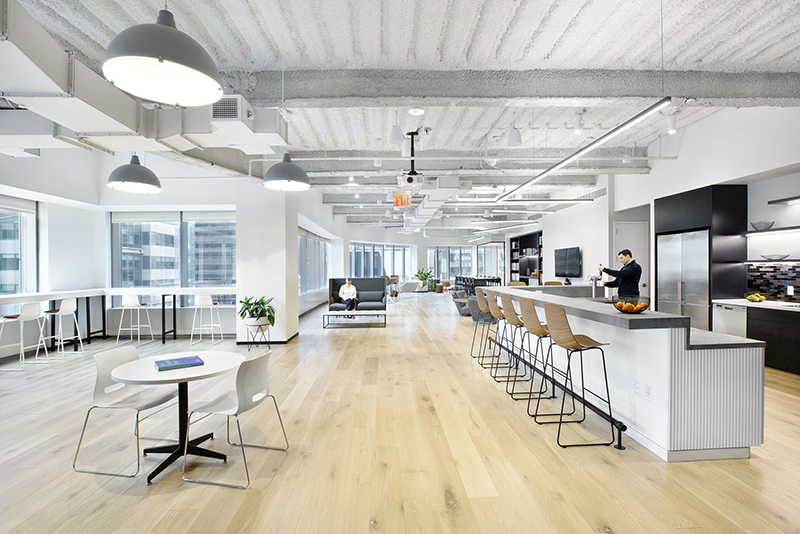
Office Layout and Finishes
“The highlight of the suite is a centrally located, 2,000 s/f open space, located adjacent to the executive office section and facing the curved exterior building wall. It serves as a co-working area, technical library, pantry, and event and presentation space,” said Tom Yeh, MDA job captain. The pantry features an L-shaped counter along the interior wall and an L-shaped bar height island with traditional kitchen appliances, as well taps for both coffee and beer. It is finished with black millwork, a black, white, and gray tile backsplash, gray Cesarstone counter tops in a concrete finish, and a white island base. The black finishes contrast sharply with the adjacent co-working space that features a multi-seat work counter along a section of the window wall, several small meeting tables and a combination of soft and hard seating in white, neutral, and orange colors. The space was designed to be flexible, informal, and comfortable. Furniture can be easily moved to accommodate different seating needs. A large retractable projection screen is located at one end of the space, so that it can be converted into a presentation area when needed.
Two separate workplace wings are located to the east and west of the central co-working/pantry and executive areas. Technical departments, including envelope consulting, architectural testing certification and inspection, engineering testing inspection and certification, and the code advisory department, are located in an area of shared workstations bordered by glass faced interior offices and a meeting room. The accounting and administrative departments have a more traditional layout with assigned workstations and additional private offices. Standing desks are used throughout the office to give employees the option of sitting or standing as they work.
“The office can accommodate up to 120 people. Approximately 40% of the employees are transient workers who do extensive field work and come to the office sporadically,” said Glen Walker, SOCOTEC’s chief administrative officer. “The feedback we have received from our employees regarding the new office space is very positive. They enjoy the flexible seating, open space and windows, and the upscale, hip environment.”
MDA worked closely with SOCOTEC’s energy and sustainability team and the firm’s leadership to develop a collaborative aesthetic for the space, and all materials were selected specifically to be highly sustainable. The palette throughout the suite is a combination of light and neutral tones. An FSC-certified engineered wood flooring in a white oak finish extends through reception, the boardroom area, and the pantry. Carpet tile by Patcraft is used in the offices and open workstation areas and is inset below the table in the boardroom. The muted grey patterned carpet is typically manufactured as a broadloom, but Vidaris worked with Patcraft to modify the product into carpet squares so that a LEED compliant backing could be used.
Glass partitions with sliding doors by Tagwall separate the offices from the central spaces. In the boardroom, the wall telescopes so that the room and the reception area can be merged into one contiguous space. One wall in the reception area is faced with a custom decorative fluted wood panel in a white painted finish by Textures-3D to add visual interest to the space.
Suspended gypsum board ceilings extend through the reception area and corridors, and acoustic tile ceilings are used in offices. The boardroom ceiling features a gypsum board border with an inset of four-foot square acoustic tiles. In contrast, the open areas feature K13 acoustical cellulose insulation sprayed on the underside of the deck and painted white to maximize the ceiling height while providing sound attenuation.
The designers incorporated several innovative concepts into the lighting and power systems. Duplex electrical receptacles at workstations and offices have been designed so that power for each upper outlet, utilized for task lights and auxiliary items, shuts down at 8:00 p.m. to conserve energy, while each lower outlet that supplies power to computers and essential equipment is active 24/7. Occupancy and vacancy sensors are also used to control lighting, and a Lutron programmable control system adjusts light usage based on daylighting conditions and the season. Lighting fixtures are by National Lighting.
As a specialist in the field of sustainability, SOCOTEC imposed a clear philosophy that drove the project design. “We feel strongly that every company needs to be a responsible corporate citizen. Sustainability must be incorporated into all activities as part of accountable business practice to minimize the corporate environmental footprint,” said Amatruda.
MDA consulted closely with SOCOTEC’s leadership and employees to understand their use of the space before final design began. As Bigos said, “The model of the space was shared with employees to obtain their input regarding functionality and sustainability issues.”
The final design addressed a shift in the corporate paradigm. Perhaps the most important lesson learned from this project is that architects and their corporate clients need to work collaboratively to accommodate employee expectations, changing technology, and shifts in workplace culture.
LEED certification highlights:
• Energy use reduction: 14.2% as compared to LEED’s ASHRAE 90.1 baseline
• Water use reductions: 35.1% as compared to code
• Sustainable materials: 31.7% of materials by cost used recycled content or FSC certified wood
• Embodied carbon: architectural materials were selected to achieve in excess of 20% reduction in embodied carbon as compared to standard products
• Construction waste recycling: 78.2% diversion rate from five waste streams
• Daylighting: 41.6% of the regularly occupied floor area meets LEED criteria
• Quality views: 75.1% of the regularly occupied floor area meets LEED criteria
• Carbon dioxide monitoring: monitors are provided in all high occupancy spaces to ensure appropriate outside air delivery
• IAQ sensors: monitors are used to track TVOCs, temperature, RH, CO2, and other air quality metrics
• Green Power purchases: offsets were purchased representing 66.4% of the office’s annual energy use for 10 years.
Photo Credit: Ola Wilk Photography
Troutbrook expands with boutique condo project and Marriott Fairfield Inn & Suites renovation




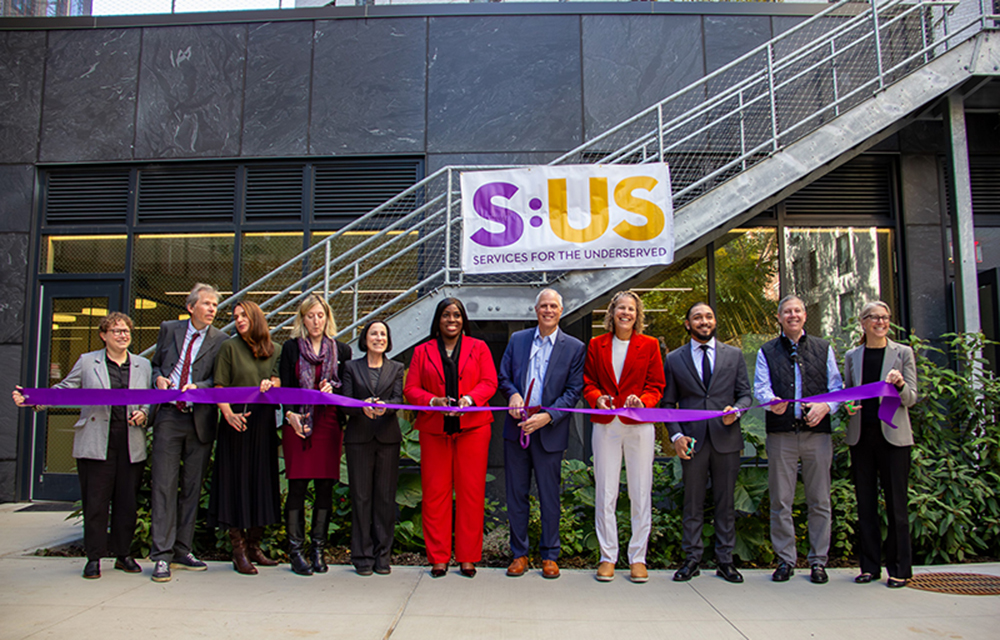
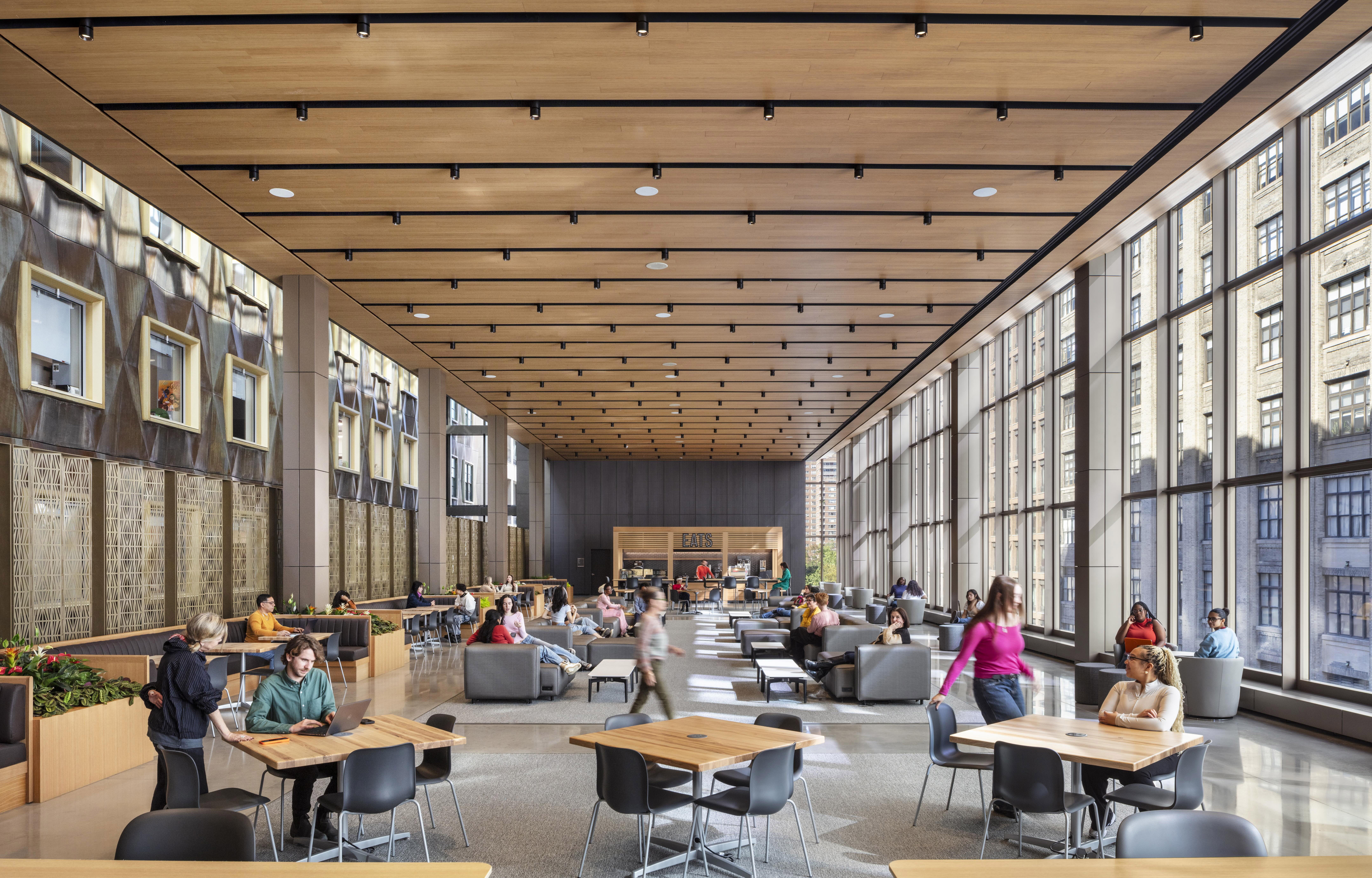
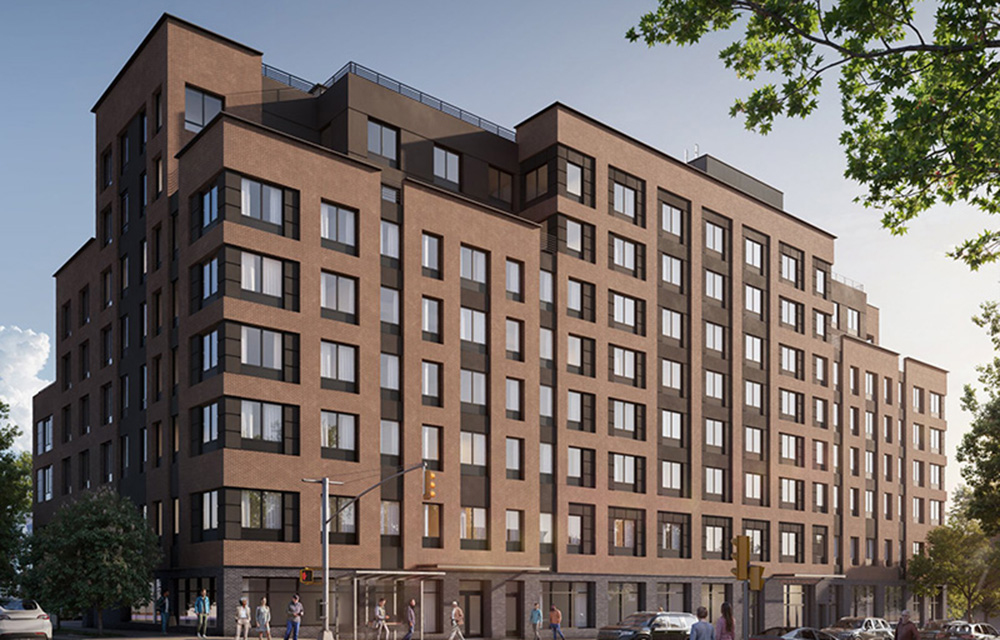

.gif)
.jpg)

.gif)